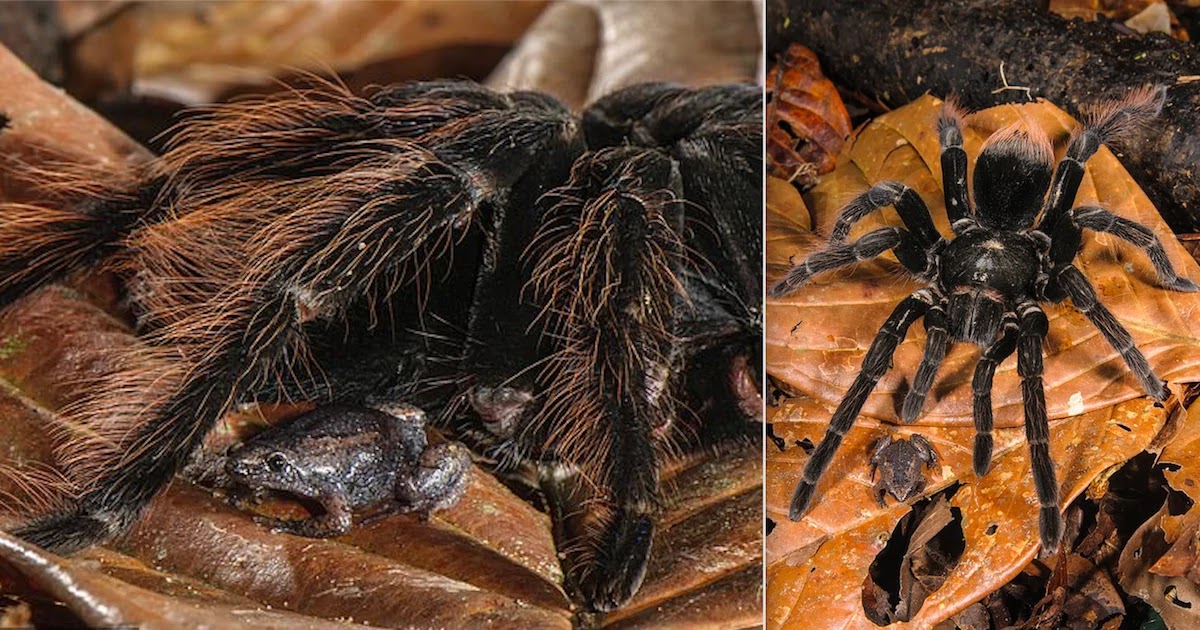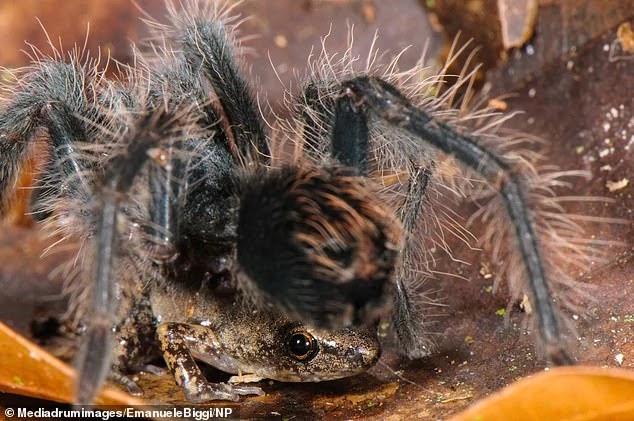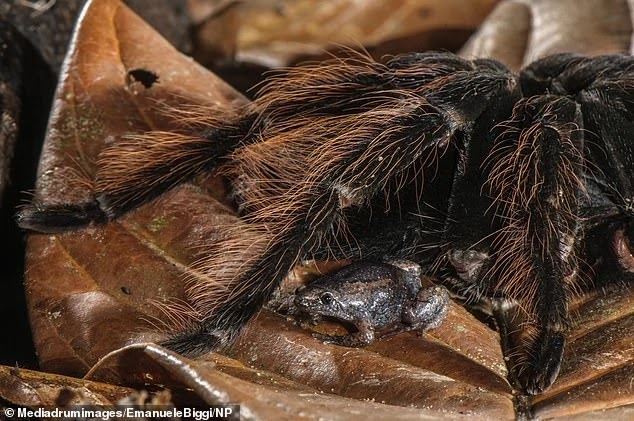
Well, we bet that you have never heard of this one before. A friendship between giant tarantulas and tiny frogs. While co-operative relationships between different species of animals occur throughout nature, birds pick insects from creatures that could easily eat them, or the wild dogs and monkeys of India who cohabit together, few would expect arachnids and amphibians to have a similar sort of arrangement.
The tiny 'humming frogs' and giant tarantula, not only live peacefully, but they actually cohabit the same tree holes – acting as each other's defender. What scientists believe is happening is a relationship of mutual convenience. The tarantulas protect the frogs from birds who try to eat them and the frogs eat the tiny insects that can harm the eggs laid by the spiders. It is also believed that the reason that the tarantulas do not eat the frogs is that the frog’s skin is covered in a toxin. This toxin makes them highly unpalatable to the spiders, who have been witnessed picking up the frogs in their mouths, examining them, then putting them down unharmed.

Even though the tiny humming frogs are the size of a fingernail giant, tarantulas can grow to be the size of a dinner plate – you certainly wouldn't want to find the highly poisonous creatures in one of your shoes that's for sure!

While the symbiotic relationship between the animals has been known since the late 80s, it was not until 2002 that an in-depth study of the phenomena was carried out by Jolene Csakany, a scientific researcher. The field work was carried out in the Amazonian jungle of Peru, where the two creatures live in perfect harmony.

While it isn't really true that the animals may be consciously thinking about their relationship, it has led some to remark that it is as if the spiders are keeping the frogs as little pets. It would certainly make for a very interesting children’s tale – the story of a giant tarantula and his little frog friends!

This discovery is a testament to the truly unique power of nature, the ability of species to adapt to their surroundings and unique circumstances, and to form bonds of convenience for the greater good. Whatever the terrain or whatever the environment it goes to show that life finds a way to survive and flourish.














COMMENTS